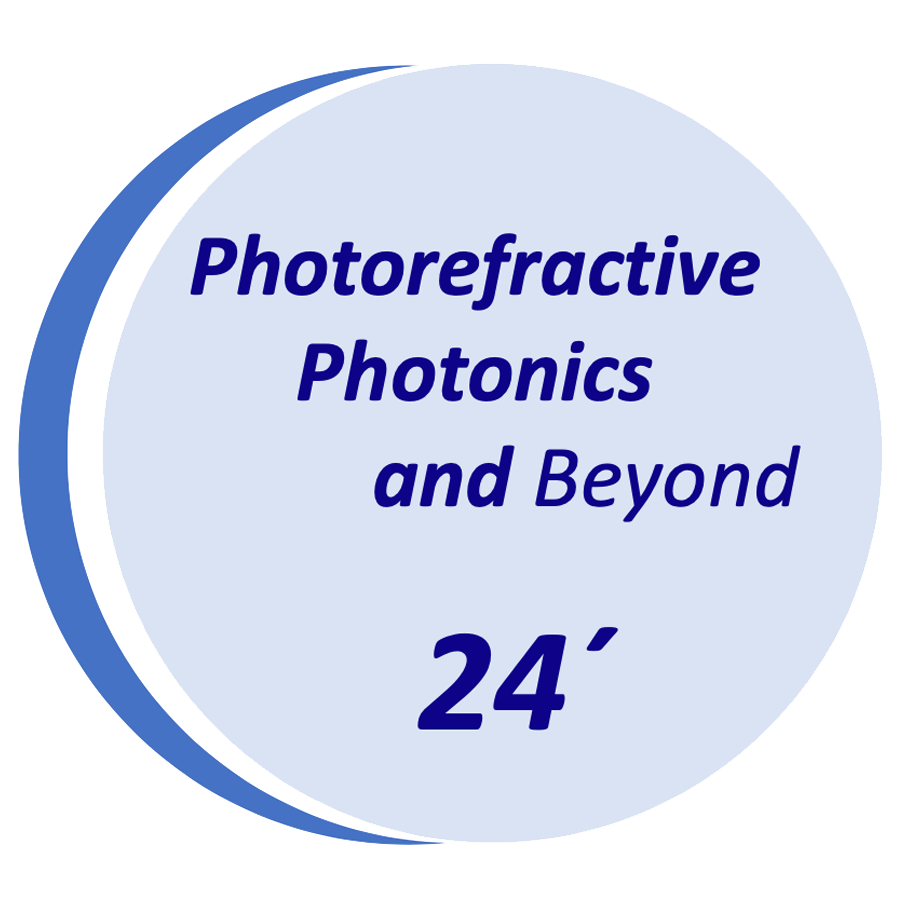The PR24 conference programme will feature Plenary lectures of 45(+15) min., Invited lectures of 25(+5) min. and Oral talks of 12(+3) min.
Here you will be able to download the book of abstracts and the PR24 Proceedings
Plenary and Invited speakers
Confirmed plenary speakers:
Prof. David D. Nolte, Purdue University (USA)
“Holographic Optical Coherence Tomography for Personalized Medicine”
Prof. Arnan Mitchell, RMIT University, Melbourne (Australia)
“Non-Linear Photonics in LiNbO3 and their applications”
Prof. Cinzia Sada, Padova University, (Italy)
“Surfing on the edge of exploring new perspectives: light-driven phenomena as a booster for new applications and scientific progress”
Confirmed invited speakers:
Dr. Carlos Antón
“Emergent materials for quantum photonics”
Prof. Yongfa Kong
“The Photorefraction of lithium niobate: from bulk to thin film”
Prof. Yan Sheng
“Nonlinear photonic crystals via all optical poling of ferroelectrics”
Prof. Simonetta Grilli
“The pyroelectric effect in ferroelectric materials: new perspectives for biological applications”
Prof. Wenbo Yan
“Photovoltaic High-throughput Microfluidic Platform for the Mass-Production of Hybrid Viscous Microdroplets Towards Diverse Applications”
Dr. Hana Jungová
“Applications of light-driven nanomotors and deflecting metagratings in sensing and microscopy”
Franzette Paz-Buclatin
“Design and fabrication of nanostructured diffractive microlenses inside optical crystals by 3D laser nanolithography”
Schedule
The tentative version of the program is shown below. It will be updated as the registration of the participants and the session planning progress.

Excursion – Royal Monastery of San Lorenzo de El Escorial
The Royal Monastery of San Lorenzo de El Escorial, recognised by UNESCO as a World Heritage Site, has been called the “eighth wonder of the world”. This great nave, with up to 4,000 rooms, is the largest granite building in the world.
It is known the world over for its unique Herrerian architecture, indebted to Juan de Herrera, who completed its construction after the death of its original architect, Juan Bautista de Toledo.
It was built by King Felipe II and has been a royal site ever since for many monarchs, many of which lay in its Cript. It contains the tombs of the monarchs of the Bourbon and Austrian houses who died after the date of its construction, with the exception of Felipe V, who rests a few kilometers away in La Granja de San Ildefonso, as well as Fernando VI, who is in the Reales Salesas.



